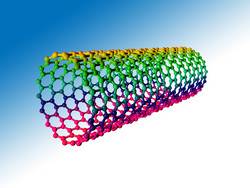Risk analysis for nanomaterials
The goal of the LICARA(opens in new window) (Life cycle approach and human risk impact assessment, product stewardship and stakeholder risk/benefit communication of nanomaterials) project was to develop a structured life cycle approach for nanomaterials. This enabled researchers to balance health and environmental risks of nanomaterials with their benefits and also to compare them with the risks and benefits of conventional (non-nano products). A dual approach was used, beginning with SME partners scanning the risks and benefits of selected materials using the LICARA nanoSCAN tool developed by the project. In-depth assessments were then conducted by professional scientists using quantitative data and state-of-the-art techniques, across the product’s entire life cycle, including worker and consumer exposure. An in-depth assessment was conducted for four case studies. These were a microfiber cloth based on nanosilver biocide, a nanosilver coating on hospital door handles, a self-cleaning nanotitanium coating for outdoor facades and a fuel cell catalyst based on carbon nanotubes. The approach and factsheets developed by LICARA will help SMEs to make decisions about developing and producing safe, sustainable products by gathering relevant information to important questions. It will also help SMEs to learn about best practice and help inform suppliers, clients, consumer groups, authorities and other consumers to learn more about nanoproducts. LICARA guidelines are accompanied by the LICARA nanoSCAN analytical tool, which facilitated the introduction of the guidelines themselves. An SME that works through the guidelines will achieve a systematic overview of potential benefits and risks and will be ready to use the analytical tool. The scan makes transparent the evaluation of nanospecific benefits and risks for nanoproducts. The results of the LICARA nanoSCAN outline a nanoproduct’s strengths and weaknesses, including uncertainties and knowledge gaps and their relevance. This will support manufacturers and their stakeholders in their decision-making on further assessment, research, development and production of a particular nanoproduct. LICARA will therefore facilitate the uptake of nanomaterials technology, thereby supporting the growth and competitiveness of the EU economy while ensuring the health and safety of its citizens.







